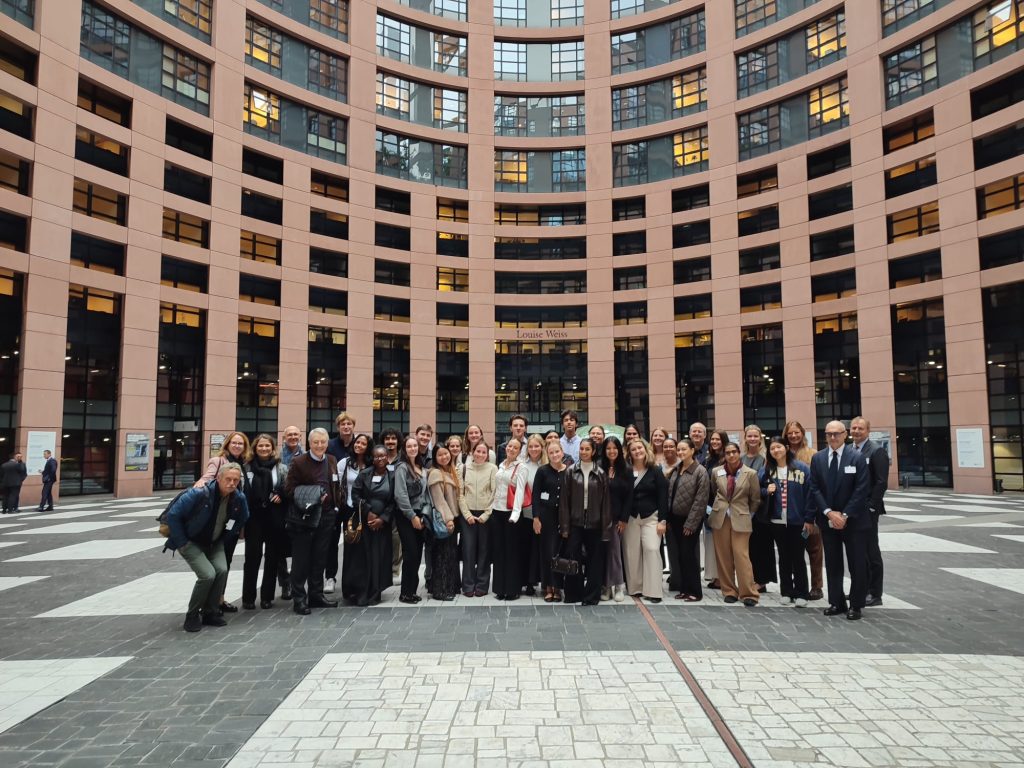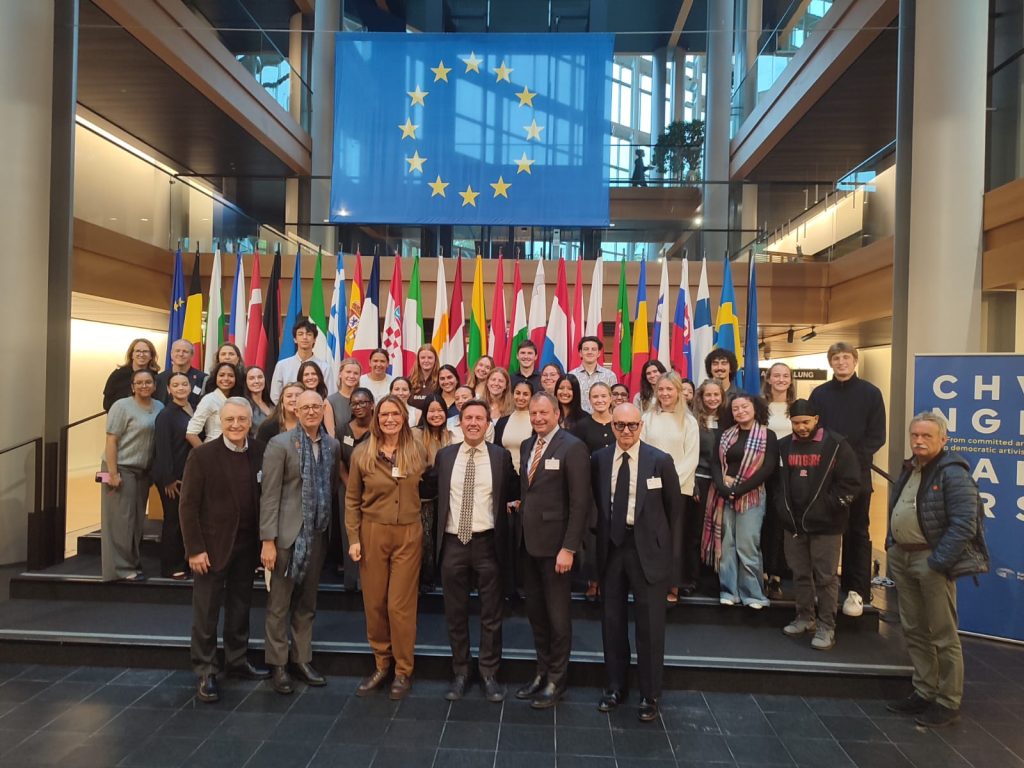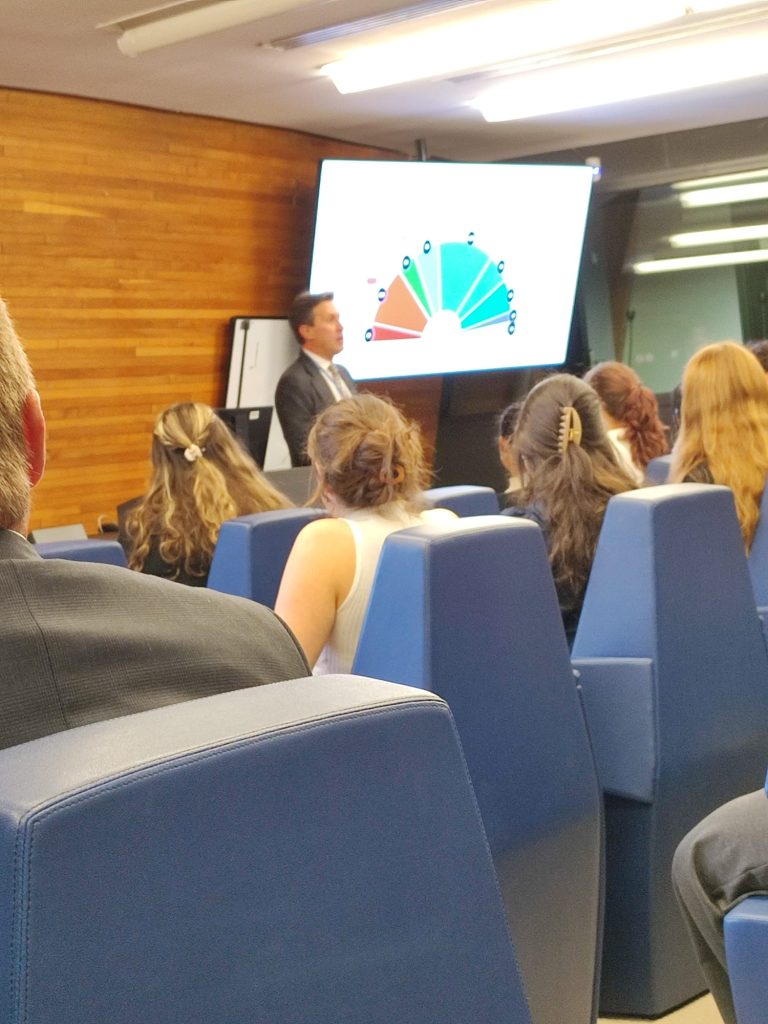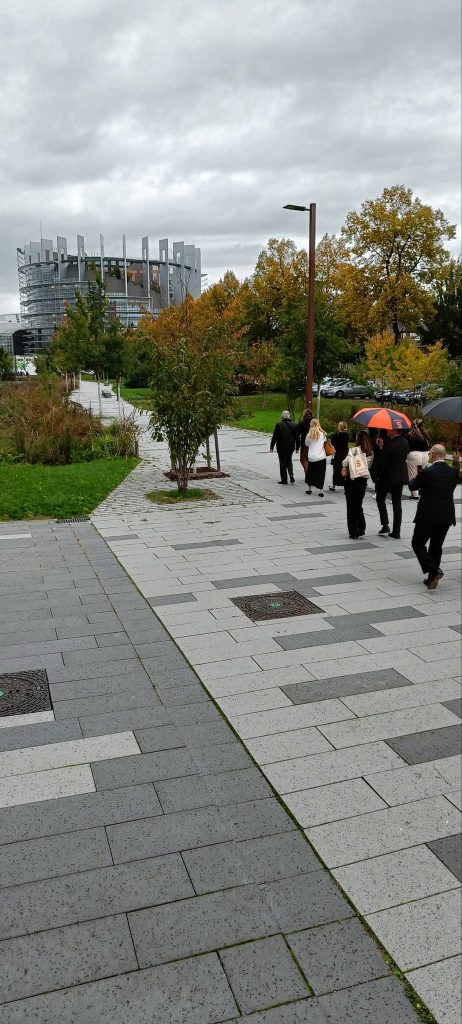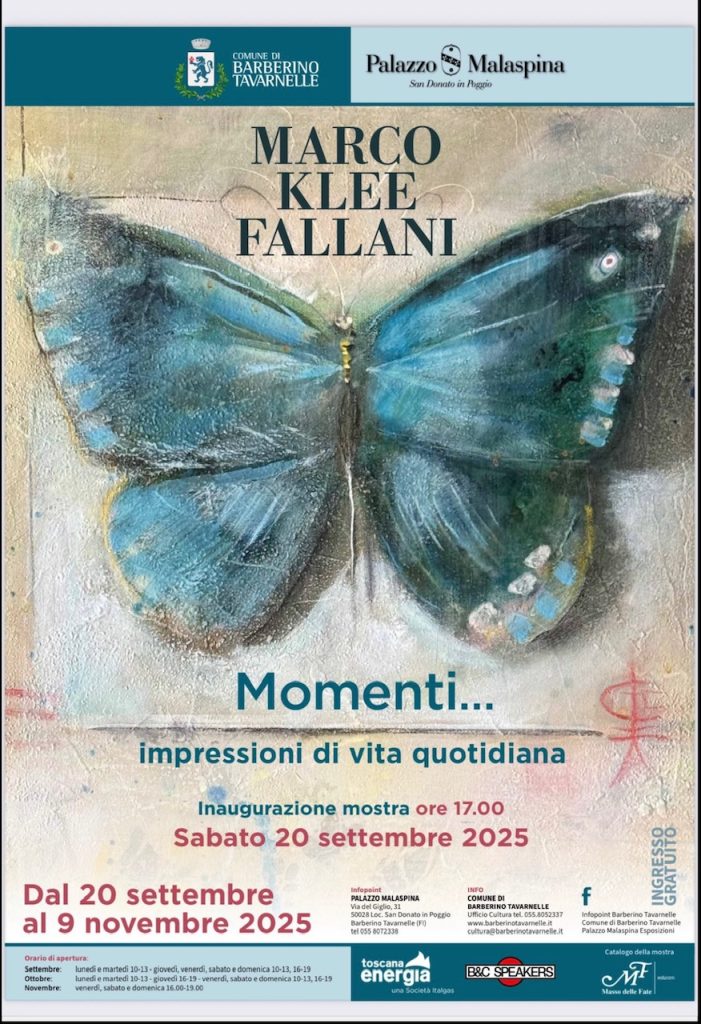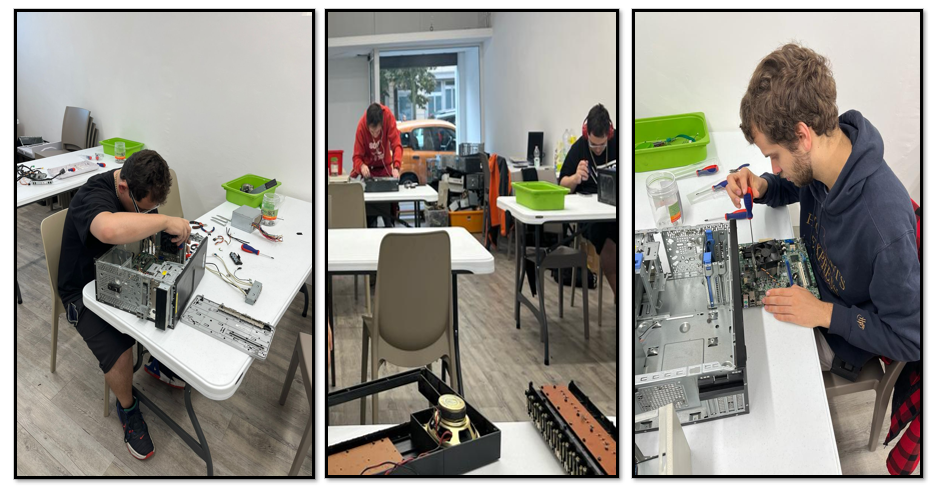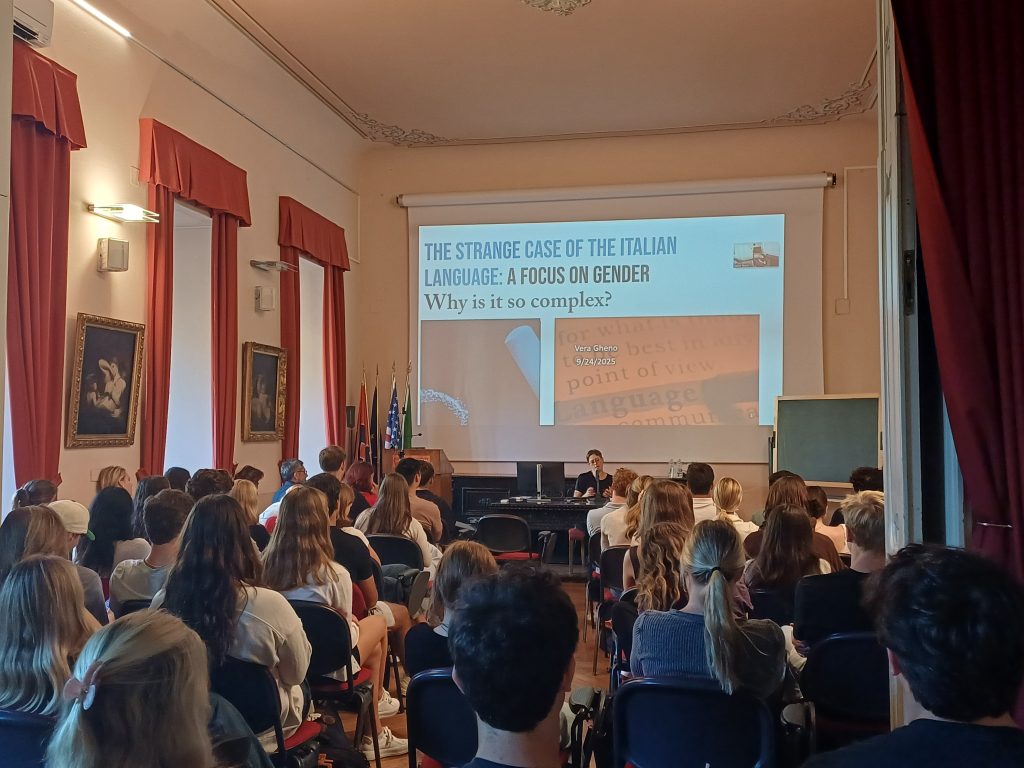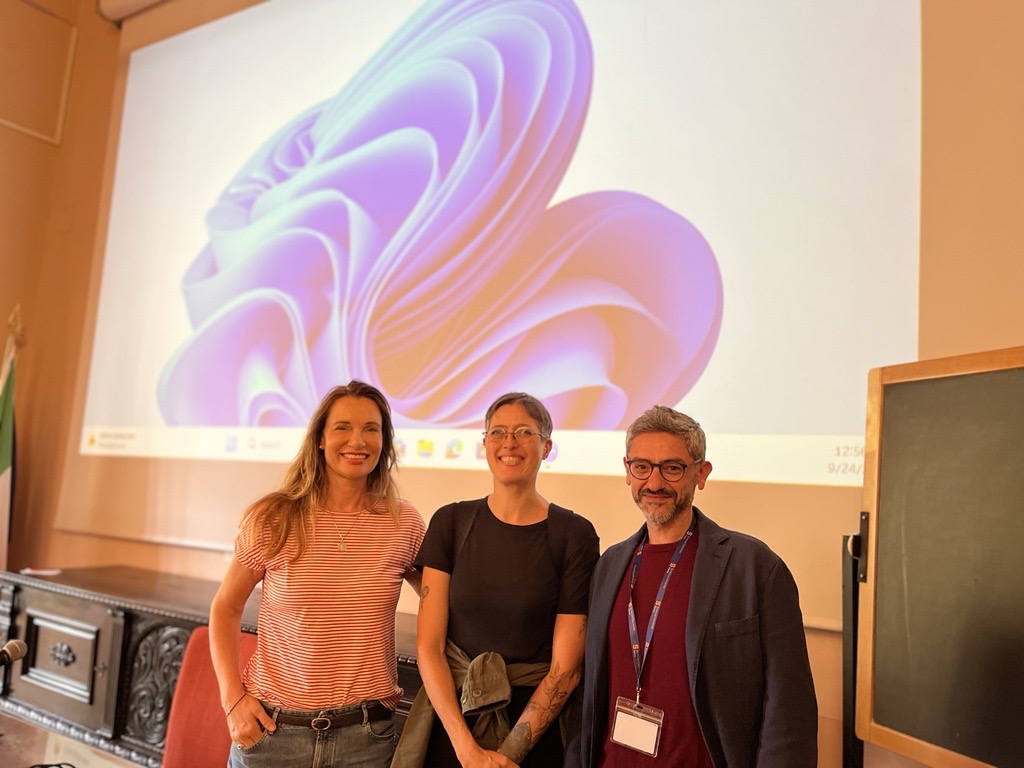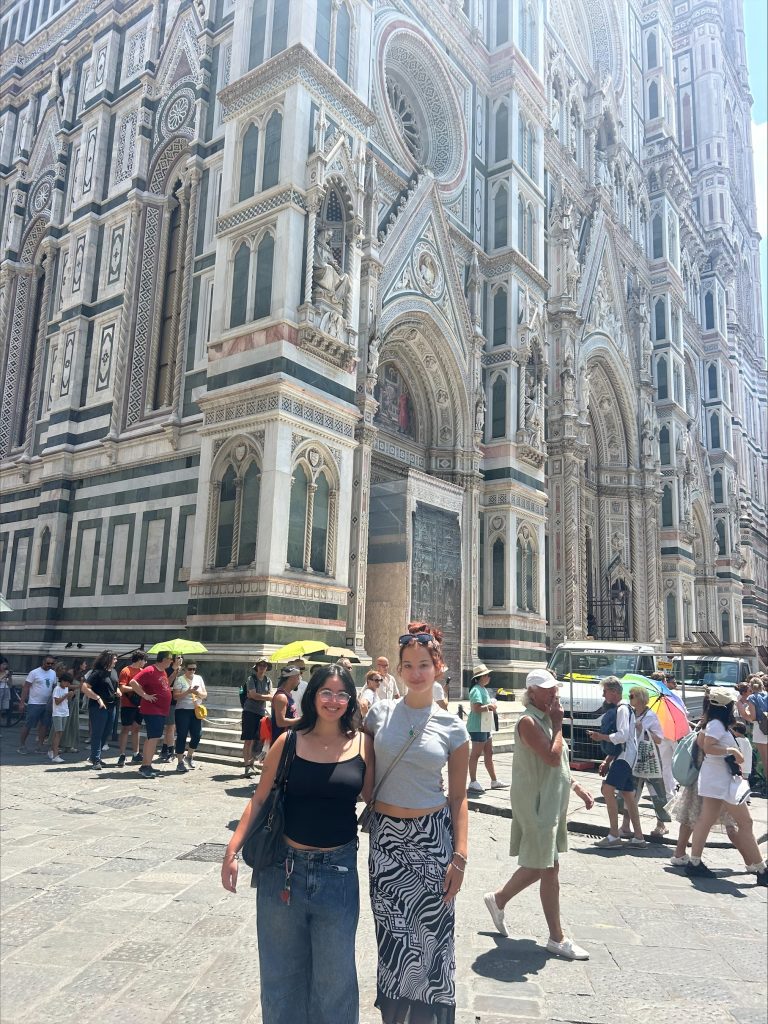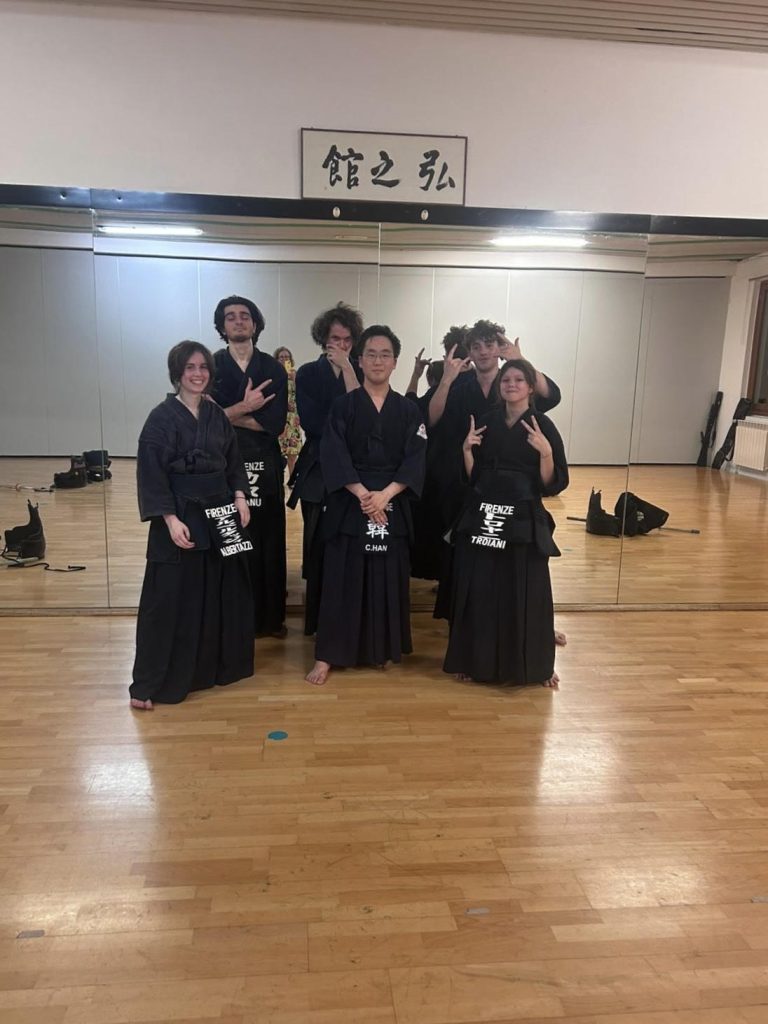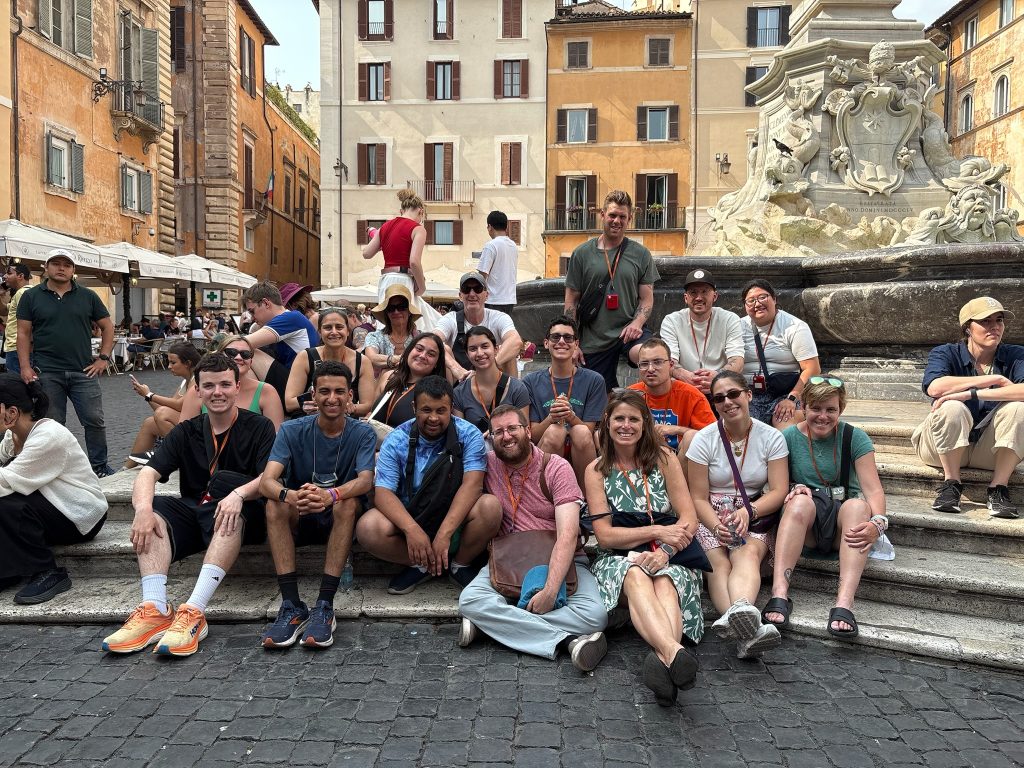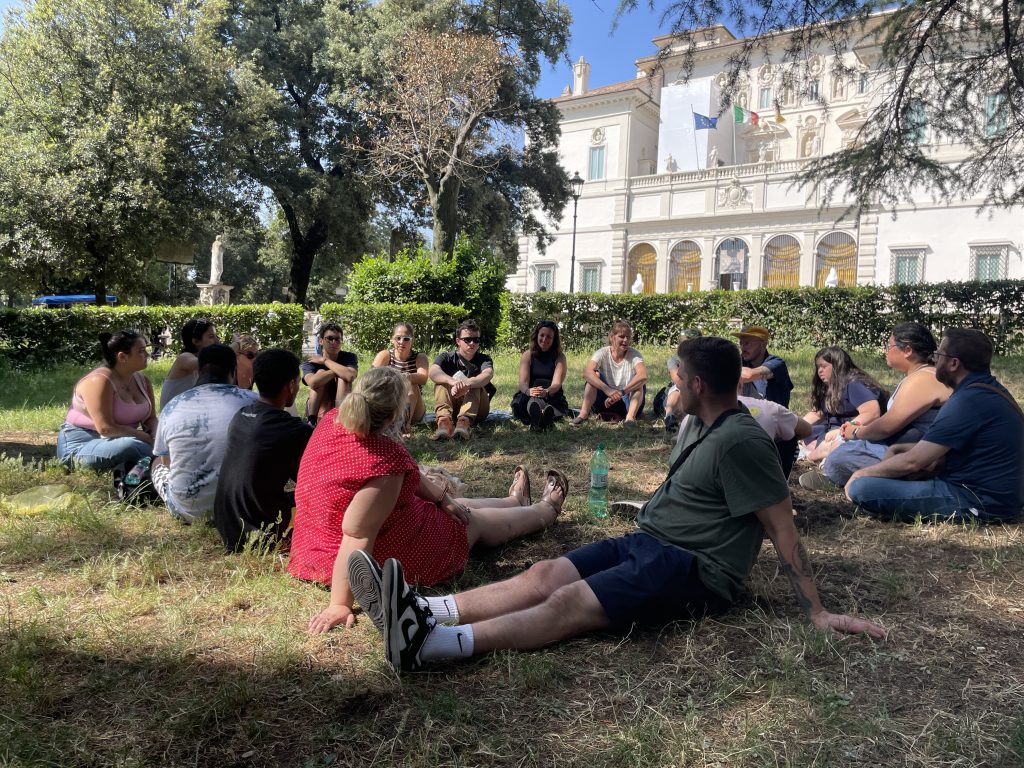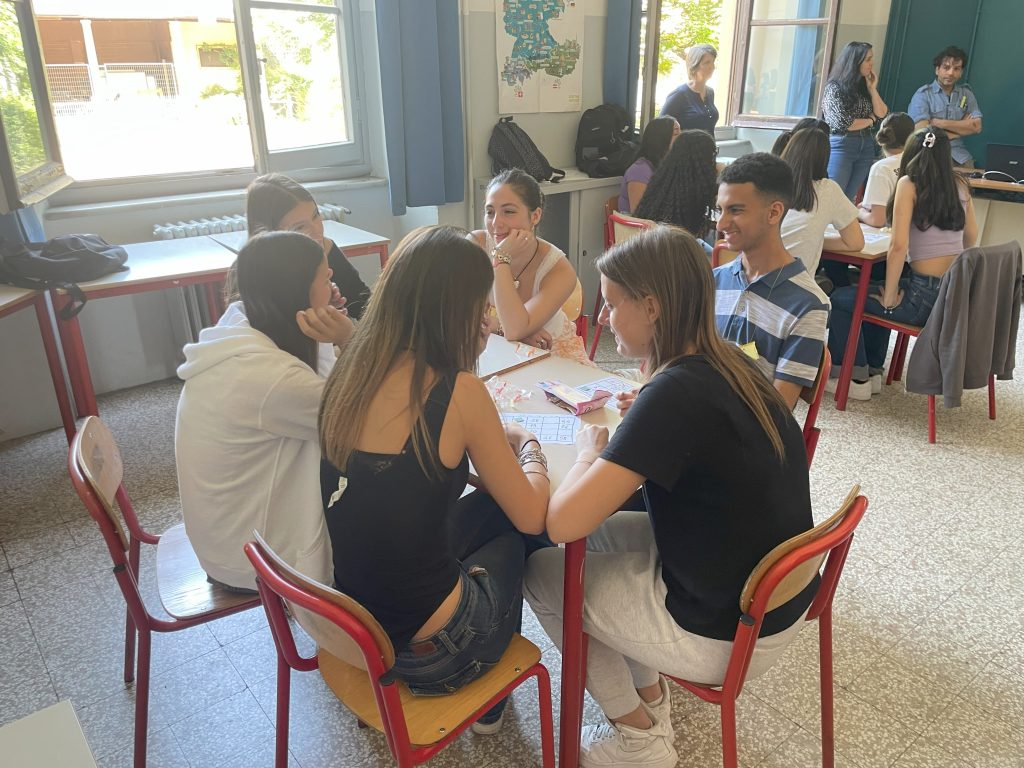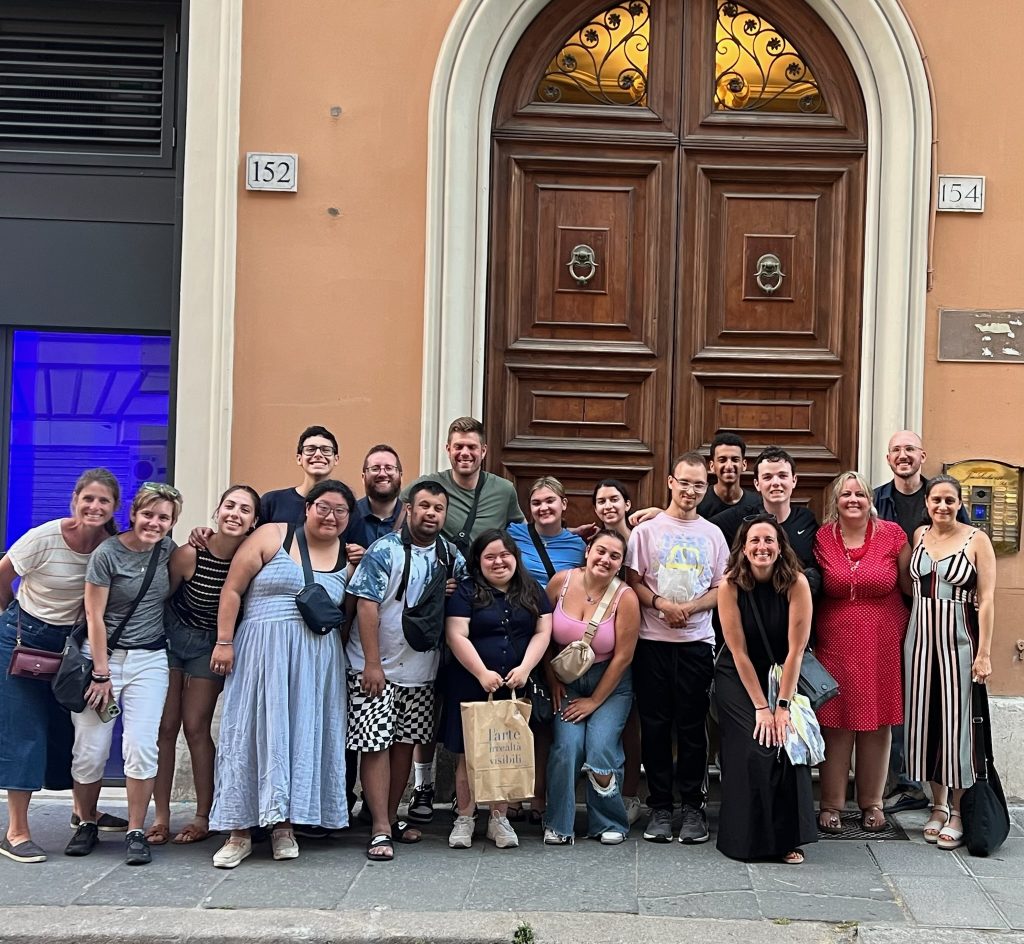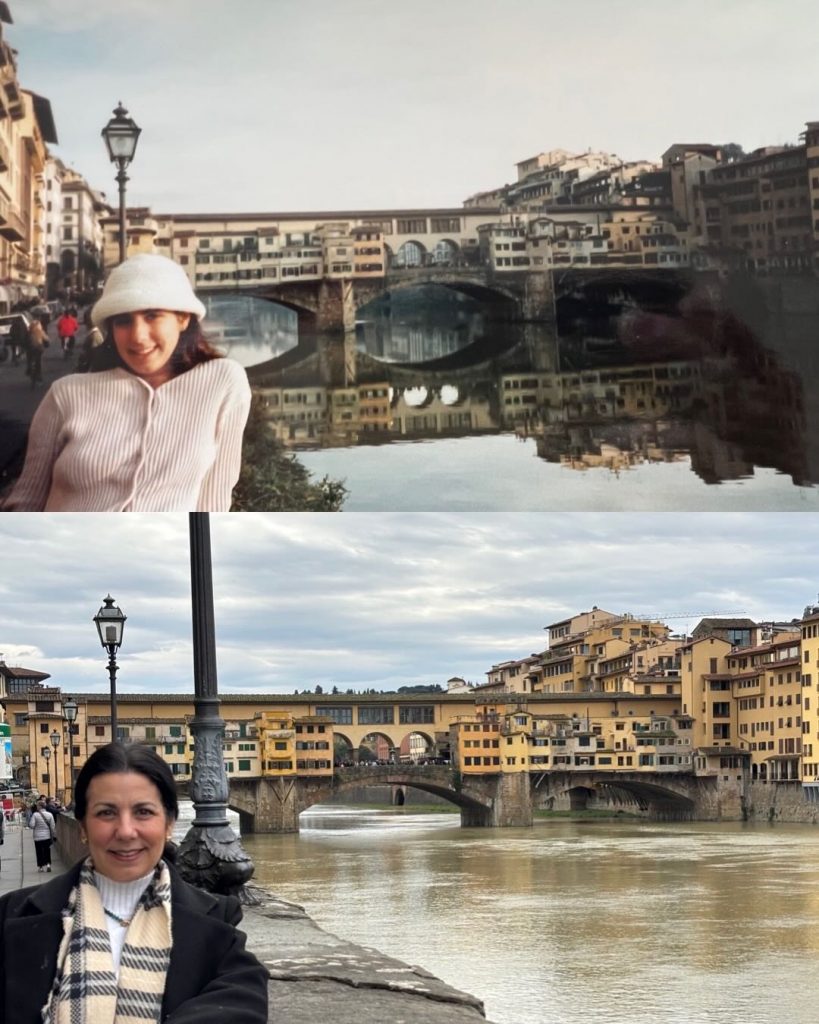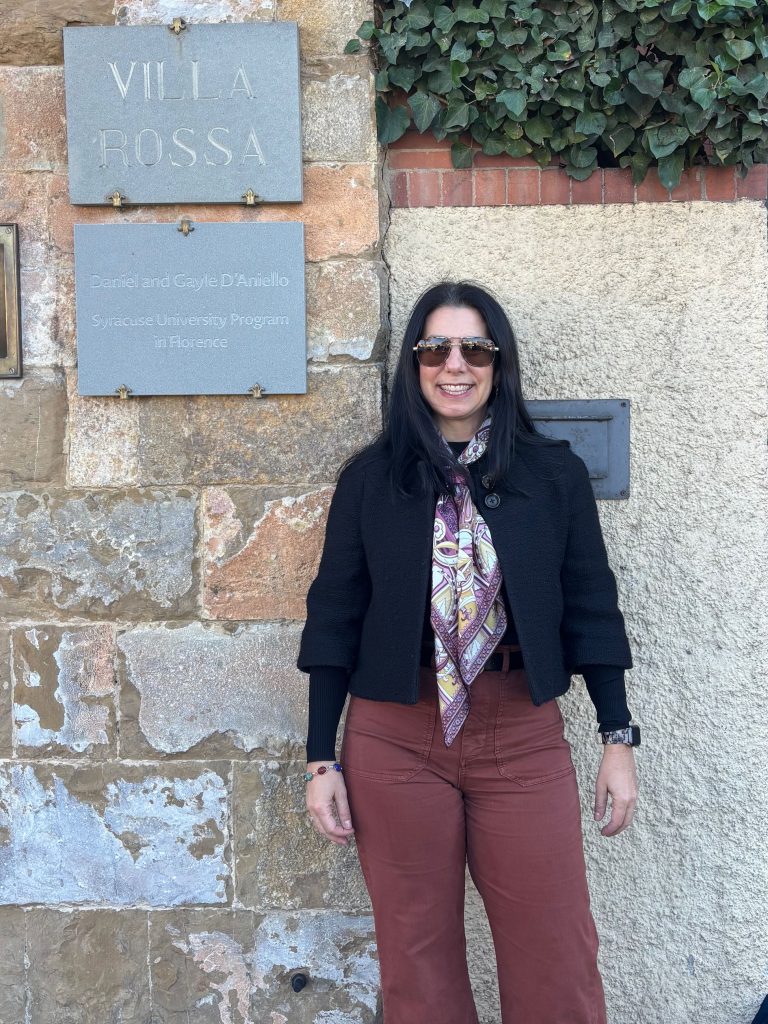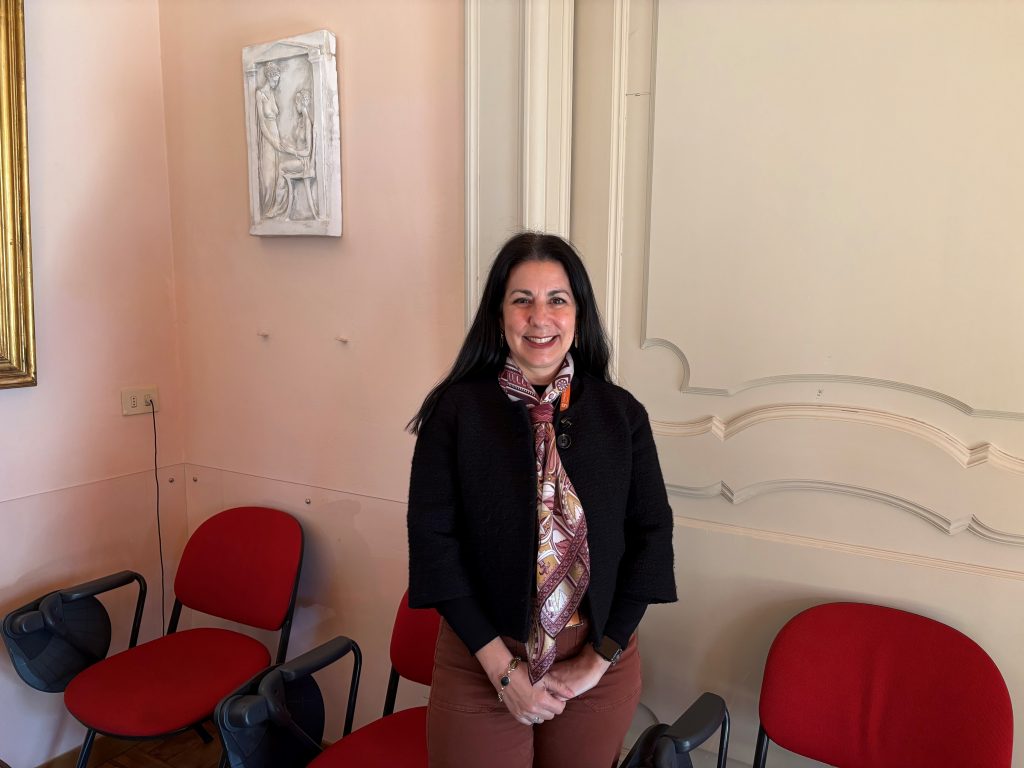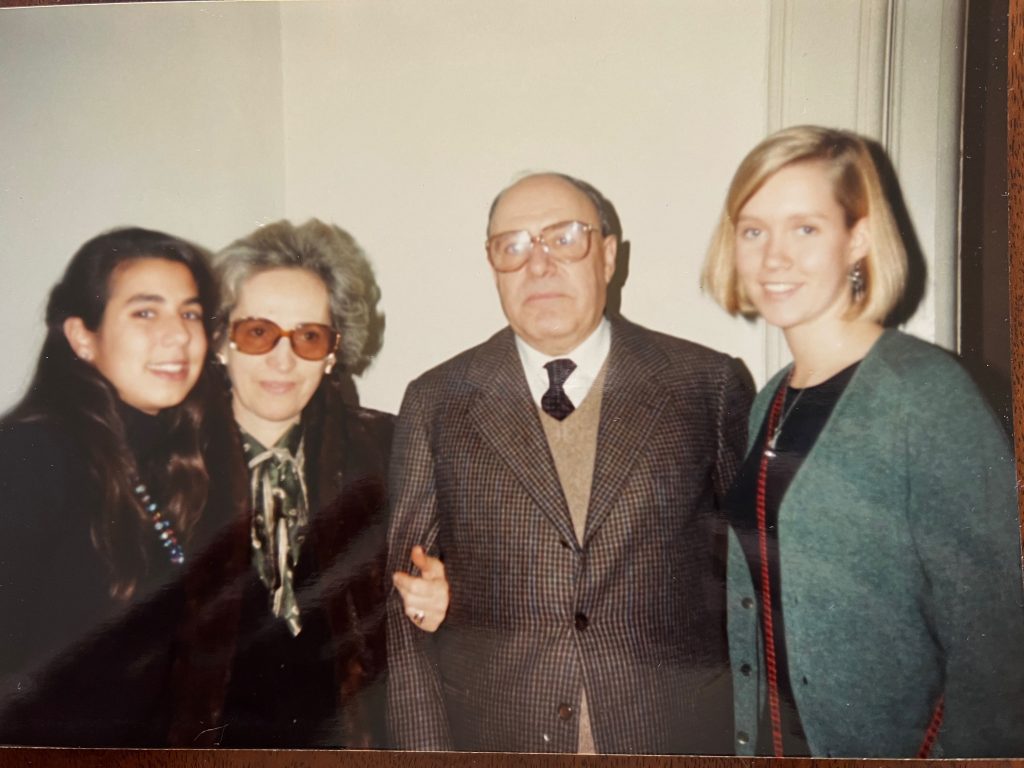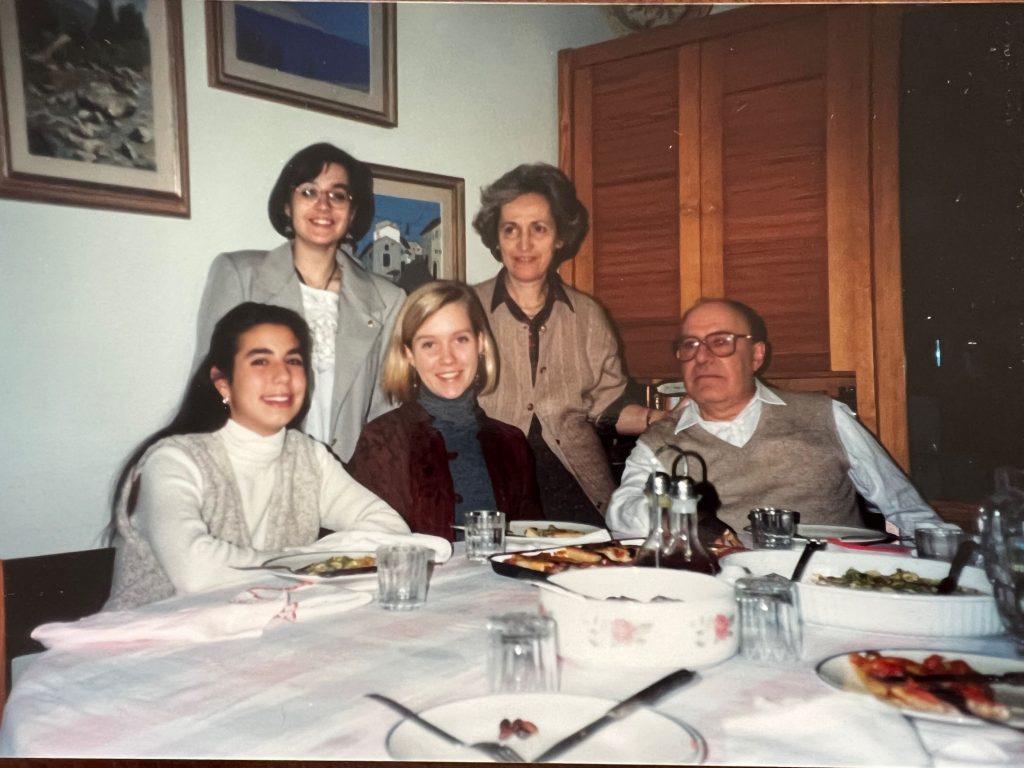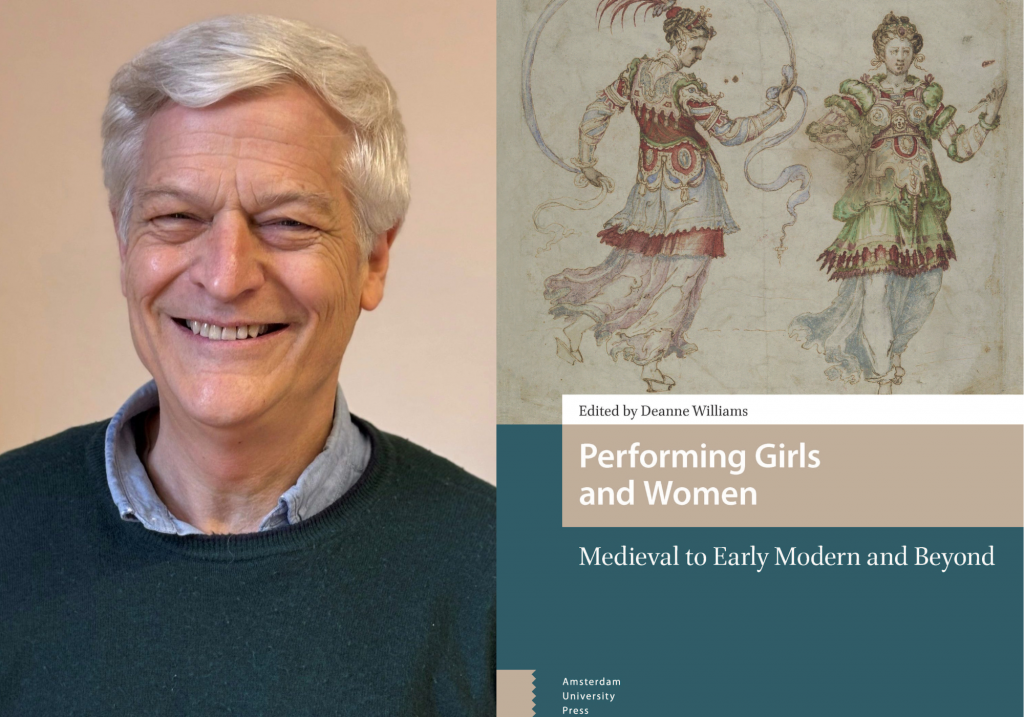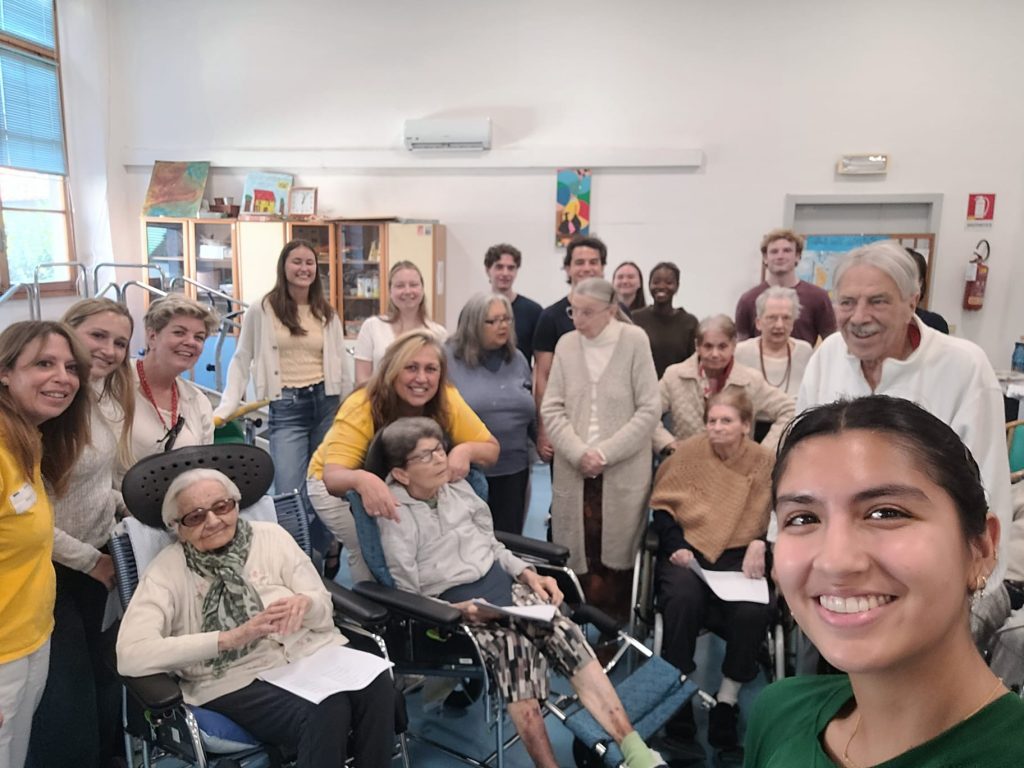
This fall, Syracuse Florence students stepped beyond the classroom to engage in a meaningful conversation exchange with elderly residents of Florence, organized by Immersive Learning Coordinator Mario Russo. It was a unique opportunity for students to practice Italian in real-life settings while building intergenerational connections.
Russo explains:
“Our students are learning directly from the community by collecting oral histories from elderly residents. Rather than a replacement for classroom work, it’s a way to use the language they’re learning in real conversations and to build practical skills.”
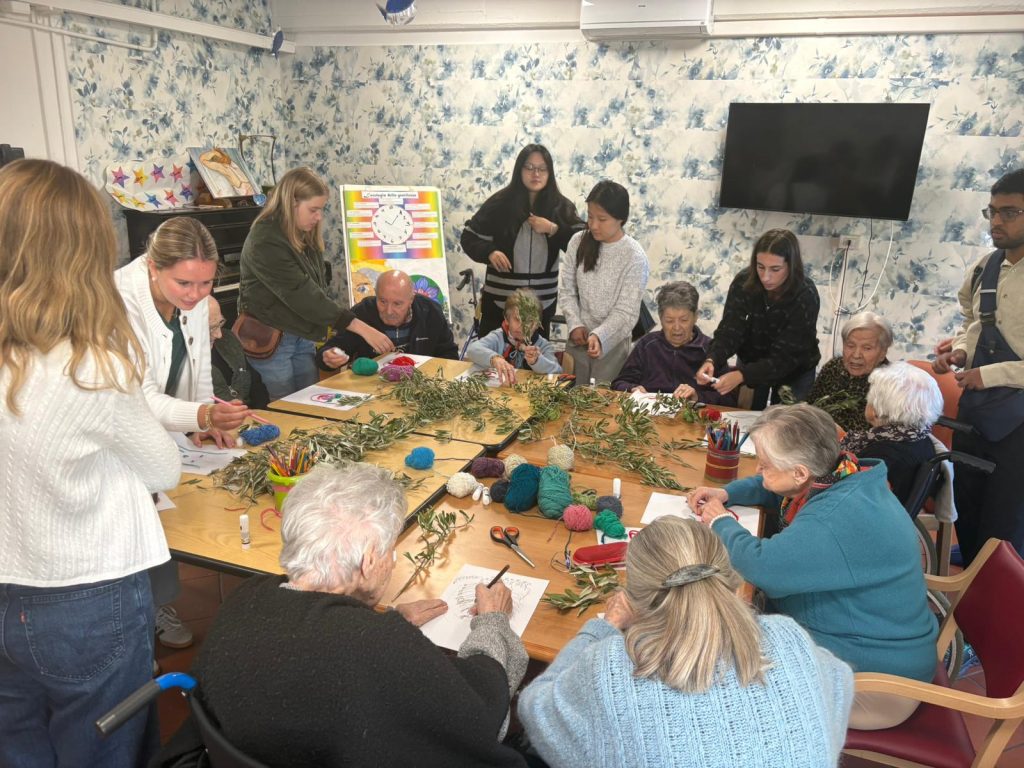
Students described the experience as eye-opening and deeply rewarding:
Annemarie
Visiting Montedomini in Florence with my Italian class was truly memorable and heartwarming. Walking into the elderly home, I immediately felt a sense of warmth and connection, even before we began to sing. The residents greeted us with smiles and curiosity, and despite the differences in age and background, there was a shared sense of joy that filled the room. Singing familiar Italian songs like Bella Ciao together created a beautiful moment of unity as music bridged the gap between generations and languages.
For me, this visit was more than just an opportunity to practice Italian. It showed me how language, music, and kindness can connect people on a deeply human level. Leaving Montedomini, I felt grateful for the experience and inspired by the warmth and resilience of the residents. It was a day filled with joy, connection, and genuine emotion that I will never forget.
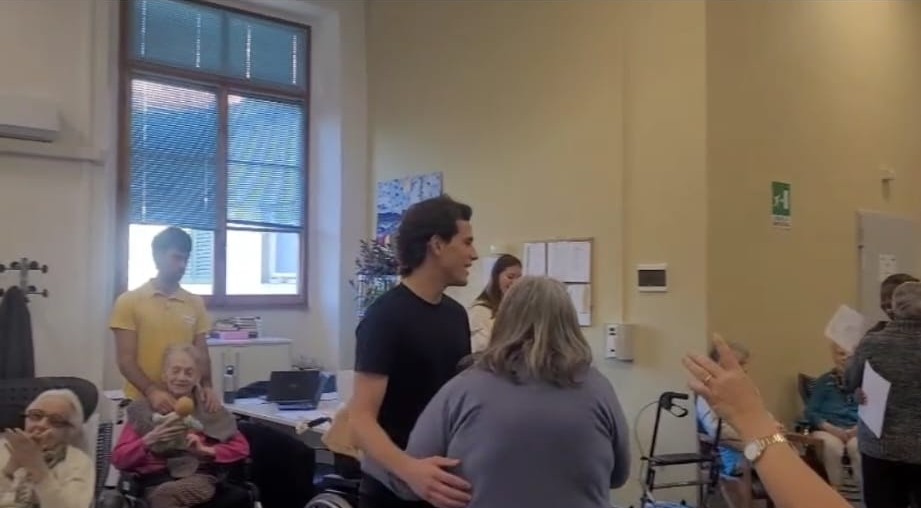
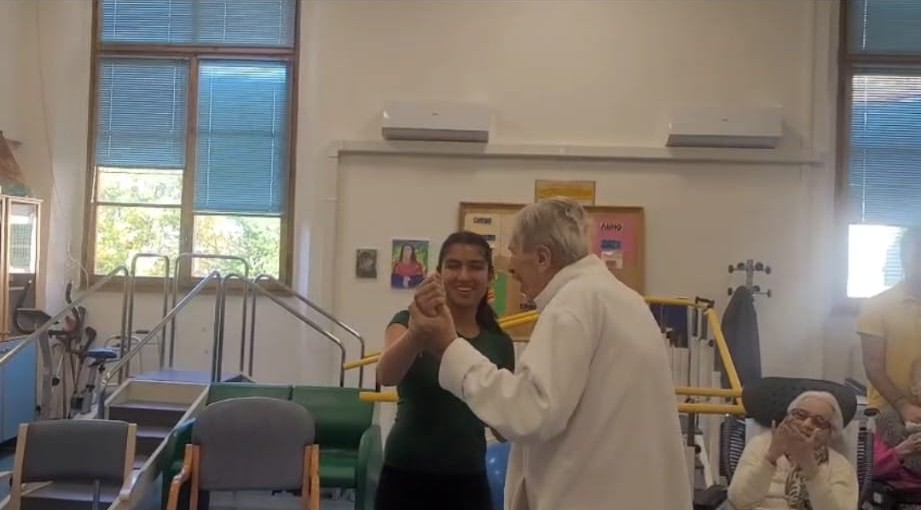
Marina
I found the experience to be incredibly valuable and immersive. Though speaking with the elderly required relatively advanced Italian skills, I believe that it encouraged me to become thoughtful and resourceful about the skills I do possess and create connections in that way. In particular, because most shop attendants and restaurant owners speak English in Florence, I hadn’t been pushed out of my comfort zone until this experience. I believe that being placed in challenging and immersive situations is the most effective way to learn a language.
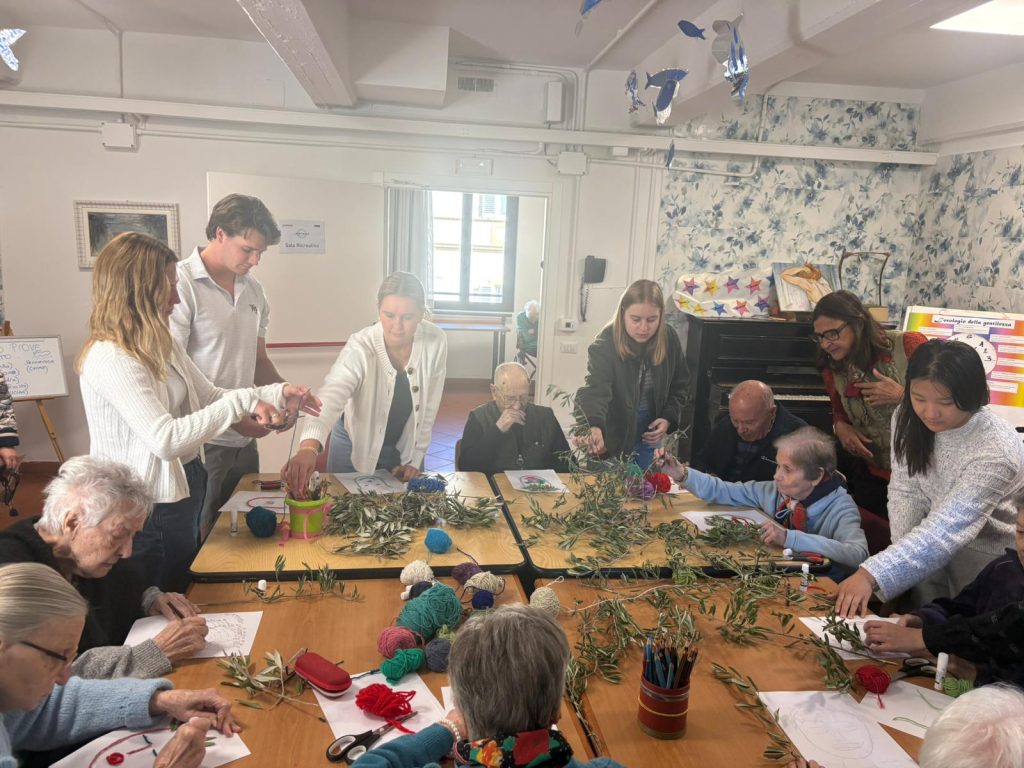
Brendan
Visiting the elderly community home was such a memorable and meaningful experience. We sat three to a table and had the opportunity to speak with the residents entirely in Italian, asking them questions about where they were from, their lives, and their families. It was both a great way to practice the language and a chance to connect with people who had so many interesting stories to share. After our conversations, we drew portraits of them based on how they described their appearance, which made the interaction even more personal and creative. It was really special to see how proud and happy they were to be part of the activity, and it helped us see how language can bridge generations and bring people together. Overall, the visit was not only a fun learning experience but also something that made our class feel more connected to the local Florentine community. I think this kind of activity should definitely be done again by future classes—it’s an amazing way to practice Italian while making a genuine human connection.
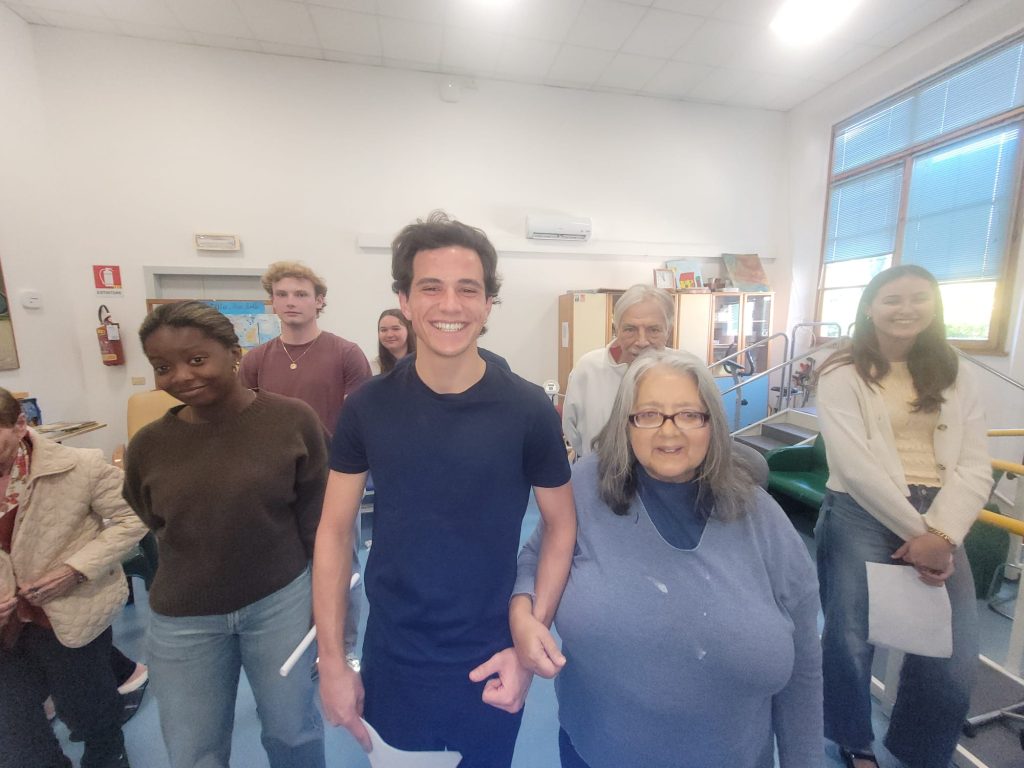
The exchange not only helped students improve their Italian, but also fostered empathy, cultural understanding, and a sense of community.
As Syracuse Florence continues to expand its immersive learning offerings, initiatives like this demonstrate the power of language to connect people across generations and cultures.

